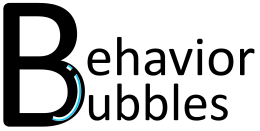In today’s post, we will look at the concepts of Reinforcement and Punishment with regards to ABA terminology. These concepts can be grouped into Positive Reinforcement, Negative Reinforcement, Positive Punishment, and Negative Punishment. We will go through the definitions and provide examples to further your understanding of each concept below.
Positive Reinforcement (Adding something to the environment to increase future likelihood of behavior occurring).
1A) The child appropriately requests for a cookie. The cookie is given to the child. The child is more likely to request appropriately again in future.
1B) The child waits nicely for their turn. The teacher praises the child for waiting nicely. The child is more likely to wait nicely in future.
1C) When we work, we receive our salary. We are more likely to continue going to work.
Negative Reinforcement (Removing something from the environment to increase the future likelihood of behavior).
2A) When the alarm is ringing, pressing the button would result in the alarm turning off. The removal of the aversive alarm ringing would increase the likelihood we press the alarm button in future.
2B) Should nagging be aversive to the child, doing their homework would result in the nagging stopping. The removal of the nagging sounds would increase the likelihood the child does their homework in future.
Positive Punishment (Adding something to the environment to decrease the future likelihood of behavior)
3A) Everytime you answer a call from your parents, they would nag. As you find nagging aversive, this decreases the likelihood you would answer the phone when they call in future.
3B) The employee behaves inappropriately in work. The boss gives a written warning to the employee. This decreases the future likelihood the employee will behave inappropriately in future.
Negative Punishment (Removing something from the environment to decrease the future likelihood of behavior)
4A) The child was screaming in front of the TV. The parents turned off the TV. The child could not watch the TV anymore due to their screaming. This decreased the future likelihood the child would scream in front of the TV.
4B) The child did not do their homework. The parents took away the child’s favourite toy. This decreased the likelihood the child would not do their homework in future.
Based on the BACB code of ethics, we would tend to look at reinforcement first, and only consider punishment as a last resort (or dependent on the circumstances) for the modification of behavior. I hope this article helps you to have a better understanding of the concepts of reinforcement and punishment! Feel free to post some examples in the comments below.


One thought on “Reinforcement & Punishment”